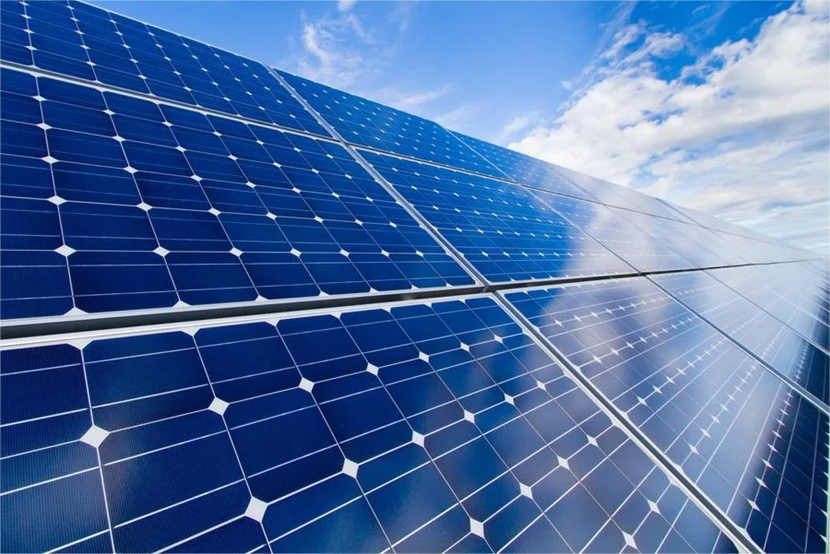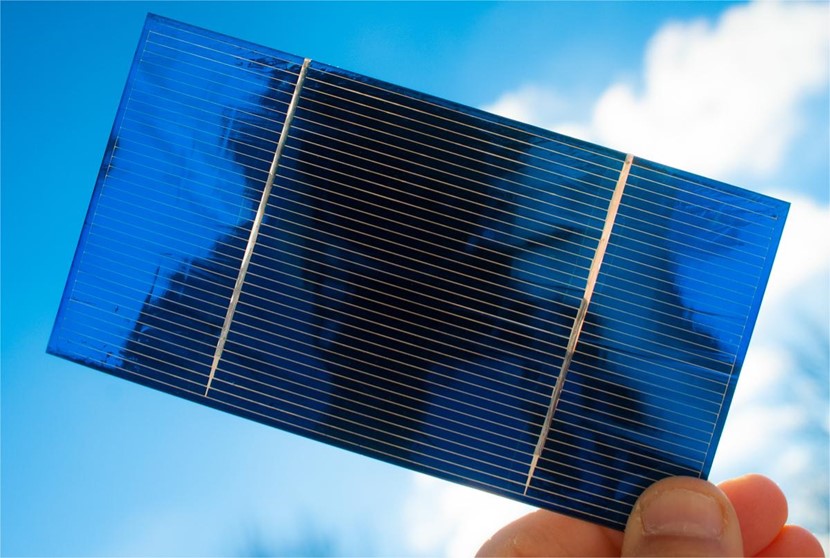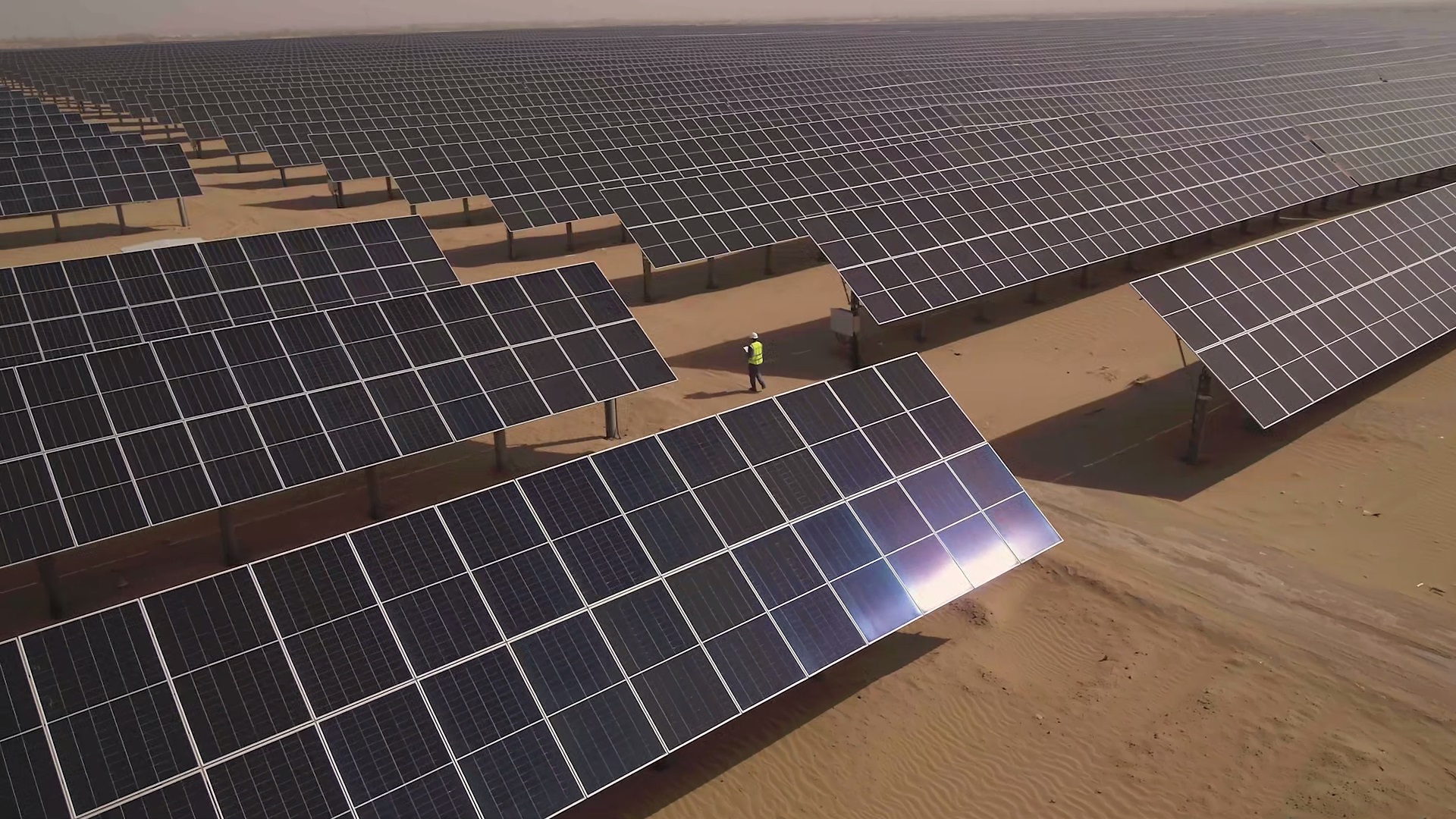Description
A solar cell, also known as a photovoltaic cell, is an electrical device that converts the energy of light directly into electricity through the photovoltaic effect. This is a physical and chemical phenomenon where certain materials, when exposed to light, can absorb photons and release electrons, generating an electric current.

Definition of a Solar
Cell
A solar cell is
a device that converts the energy of light, specifically sunlight, directly
into electricity through the photovoltaic effect. This effect is a physical and
chemical phenomenon that occurs when light hits certain materials, causing them
to absorb photons and release electrons. The free electrons then create an
electric current, effectively converting solar energy into usable electrical
power.
Brief History of Solar
Cells
The history of solar
cells is a captivating narrative of human ingenuity and the quest for
sustainable energy. Alexandre
Edmond Becquerel first observed the photovoltaic effect in 1839, but it
wasn't until 1954 that Bell Labs developed the first practical solar cell with
an efficiency of around 6%. This invention opened the door for the practical
utilization of solar power. The energy crisis of the 1970s accelerated interest
and development in solar power technology. In the subsequent decades,
advancements in material sciences and the development of novel technologies
have continued to enhance the efficiency and reduce the cost of solar cells,
leading to their widespread adoption in today's renewable energy landscape.
Construction and
Operation of Solar Cells
Solar cells, the fundamental building blocks of solar panels, are intricate devices that require specific materials and mechanisms to effectively convert sunlight into electricity.

Materials Used
The choice of material forms the backbone of a solar cell's performance and efficiency. Some of the most common materials used in the construction of solar cells are:
· Silicon (Si): As the second most
abundant element on Earth, silicon is a key material in most solar cells due to
its semiconducting properties. There are two main types of silicon used in
solar cells - monocrystalline silicon and polycrystalline
silicon, each with their own strengths and limitations.
· Thin-Film Materials: This category
includes a variety of materials such as cadmium telluride (CdTe), copper indium
gallium selenide (CIGS), and amorphous silicon (a-Si). These materials are used
in thin-film
solar cells, which are generally less efficient but also less expensive
than silicon-based cells.
· Perovskites: Perovskite
solar cells are a newer development in the solar industry. They are made
from a class of materials that share a common crystal structure. These
materials are particularly exciting due to their high efficiency and low
production cost.
Mechanism of Solar
Energy Conversion
The conversion of solar
energy into electricity in a solar cell, also known as the photovoltaic effect,
takes place through a few key steps:
· Light Absorption: The solar cell
absorbs sunlight, and the energy from the light excites some of the electrons
in the material of the cell.
· Electron Movement: The excited
electrons move away from their usual positions in the atoms of the solar cell
material, creating areas called "holes" where electrons are missing.
· Creation of Electric Current: An
electric field within the solar cell causes the electrons and holes to move in
opposite directions. The movement of these charges creates an electric current.
· Power Extraction: This current can
be drawn off by placing metal contacts on the top and bottom of the solar cell,
which can then be used to power electrical devices or sent into the electrical
grid.
Monocrystalline
Solar Cells
Monocrystalline solar
cells are made from a single crystal structure of silicon. They are easily
recognizable by their dark black color and rounded edges. These cells offer the
highest efficiency, typically around 15-20%, due to the pure nature of the silicon
crystal. they are also the most expensive due to the complex manufacturing
process, which involves growing a single crystal silicon structure and cutting
it into wafers. The average cost of monocrystalline solar panels typically
ranges between $300 and $500 per panel, depending on the size and the brand.
Polycrystalline
Solar Cells
Polycrystalline solar
cells are made from multiple silicon crystals. They appear blueish due to light
reflection off the many crystal boundaries. Polycrystalline cells are less
efficient compared to monocrystalline cells, usually around 13-16%, but they
are also less expensive due to a simpler manufacturing process that involves
pouring molten silicon into a cast. They generally cost between $200 and $400
per panel.
Thin-Film
Solar Cells
Thin-Film solar cells
are created by depositing one or more thin layers of photovoltaic material onto
a substrate. The three main types of thin-film solar cells are made from
amorphous silicon (a-Si), cadmium telluride (CdTe), and copper indium gallium
selenide (CIGS). These cells are less efficient, typically around 10-12%, but
are more flexible and lightweight, making them suitable for applications where
weight and flexibility are important. They are also the cheapest of the three
types, with costs ranging from $100 to $300 per panel, though their lower
efficiency means larger arrays are needed for the same output.
Perovskite
Solar Cells
Perovskite solar cells are a newer type of solar cell that uses perovskite-structured materials as the active layer. These cells have shown rapid improvement in efficiency, with lab cells reaching over 25%. The primary advantage of these cells is the low cost of production, as they can be manufactured using simple solution-processing techniques. challenges related to long-term stability and the use of lead as a component need to be addressed for these cells to become a significant player in the solar market. The pricing for perovskite solar cells is not easily available since they're not commercially widespread yet. Their pricing will likely fall somewhere between thin-film and crystalline silicon cell technologies once they become commercially viable.
Efficiency of Solar
Cells
The efficiency of a solar
cell refers to its ability to convert sunlight into electricity.
Monocrystalline and
polycrystalline solar cells, which are the most commonly used types, typically
have efficiencies in the range of 15% to 20% and 13% to 16% respectively.
Thin-film solar cells, due to their simpler construction and cheaper materials, typically have efficiencies around 10% to 12%. On the other hand, new technologies such as Perovskite solar cells have demonstrated potential efficiencies exceeding 25% in lab conditions.

Factors Affecting
Efficiency
Several factors can
impact the efficiency of a solar cell:
· Quality of Material: The purity and
structure of the material used in the solar cell directly affects the cell's
efficiency. For example, monocrystalline solar cells, made from a single
crystal structure, typically have higher efficiencies than polycrystalline or
thin-film cells.
· Light Intensity: The amount of
sunlight that reaches the solar cell is another significant factor. More light
results in more energy being converted to electricity.
· Temperature: Solar cells generally
operate less efficiently at higher temperatures. This is one of the challenges
when installing solar cells in hot climates.
· Angle of Incidence: The angle at
which sunlight hits the solar cell can also affect its efficiency. This is why
some solar installations have tracking systems that move the panels to keep
them facing the sun directly throughout the day.
Current Research and
Developments to Improve Efficiency
Efforts are ongoing
worldwide to increase the efficiency of solar cells. Some of the notable
developments include:
· Multi-Junction Cells: Multi-junction
solar cells consist of multiple layers of photovoltaic material, each
designed to absorb a specific range of the solar spectrum. These cells have
achieved efficiencies above 40% in lab settings.
· Perovskite Cells: As previously
mentioned, perovskite solar cells are a promising technology due to
their high efficiency and low manufacturing costs. Researchers are continuously
improving these cells, with lab efficiencies now exceeding 25%.
· Light Concentration: Some research
is also focusing on solar cells that use lenses or mirrors to concentrate
sunlight onto a small, highly efficient solar cell. These concentrated
photovoltaic systems can achieve higher efficiencies but require direct
sunlight and cooling systems to manage the high temperatures.
Applications of Solar
Cells
Solar cells find application in a variety of settings, each with unique energy demands and benefits.

Residential Solar
Power Systems
Residential solar power systems provide homeowners with a
renewable source of energy, directly reducing reliance on grid electricity. A
typical home can use around 30 kilowatt-hours (kWh) per day. A solar panel
system with a capacity of 5 kW can produce around 20 kWh per day in optimal
conditions, which can substantially offset energy needs, especially when
combined with a battery storage system. This helps homeowners save on
electricity costs and contributes to environmental sustainability.
Commercial Solar Power
Systems
Commercial solar power
systems offer businesses a way to control energy costs and demonstrate a
commitment to sustainability. A large commercial building could have an energy
demand ranging from hundreds to thousands of kWh per day, depending on its size
and function. Installing a commercial solar power system can provide a significant
percentage of this demand, with many businesses achieving 40-70% energy offset.
Solar-Powered Devices
Solar cells also power
a wide range of devices, further showcasing their versatility. From
solar-powered calculators, watches, and street lights to solar-powered water
pumps and emergency telephones, the possibilities are vast. Solar charging for
electric vehicles is an exciting area of development, with several companies
investigating solar panels integrated directly into the vehicle's bodywork.
Environmental Impact
and Sustainability of Solar Cells
While solar cells offer a greener alternative to fossil fuels, their environmental impact and sustainability involve a broader set of considerations.

Benefits and Drawbacks
Solar cells have many
environmental benefits:
· Reduced Carbon Emissions: Solar
cells generate electricity without emitting greenhouse gases. By replacing or
supplementing traditional power sources, solar cells significantly reduce
carbon emissions.
· Renewable Energy Source: Unlike
fossil fuels, which are finite and extractive, solar energy is a limitless
resource available across the globe.
· Water Savings: Solar photovoltaic
power requires minimal water to operate, making it a more sustainable choice in
water-scarce regions.
There are also
environmental drawbacks:
· Manufacturing Impact: The
production of solar cells involves mining for raw materials, energy-intensive
manufacturing processes, and the use of hazardous materials. These activities
can lead to environmental harm if not properly managed.
· Waste Generation: At the end of
their life, solar panels can create substantial waste. Developing effective
recycling processes for solar panels is an ongoing challenge.
Lifecycle Analysis of
Solar Cells
A lifecycle analysis
considers all stages of a product's life, from raw material extraction to
end-of-life disposal or recycling.
· Manufacturing Phase: This phase
involves extracting raw materials (such as silicon, silver, and aluminum),
processing these materials into solar cells, and assembling the solar panels.
This phase can have significant environmental impacts, but ongoing research is
focused on reducing these effects through more sustainable practices.
· Usage Phase: Solar panels can last 25-30
years or more. During this time, they produce clean, renewable energy
with no direct emissions.
· End-of-Life Phase: At the end of
their life, solar panels pose a waste management challenge. Current practices
often involve landfilling, but the industry is working on more sustainable
end-of-life strategies, including panel recycling.
The Future of Solar
Cells
The future of solar
cells is not only about technological advancement but also about how these
advancements influence market trends and predictions. With pioneers like
Tongwei and many others investing heavily in research and development, we can
expect a future powered by more efficient and affordable solar technology.
Technological
Advancements and Prospects
Firms like Tongwei
are leading the charge in solar cell innovation. To enhance their research and
development capabilities, Tongwei established a Photovoltaic Technology Center,
assembling a team of industry experts to advance the technological research and
integration across all areas of the photovoltaic industry.
In 2021, the company's
Photovoltaic Technology Center focused on the introduction of new technologies
and products (such as TOPCon, HJT) to mass production. The Center also deepened
collaborations with domestic and international universities and research
institutions, bolstering research and development of next-generation and
frontier technologies (including HBC, Perovskite, stacked cells/modules,
photovoltaics + energy storage, etc.).
In terms of solar
cells, Tongwei has achieved multiple technological accomplishments with
proprietary intellectual property rights in core technology areas such as
atomic layer deposition back passivation, selective emitter processes, bifacial
cells, multi-busbars, TOPCon cells, and HJT cells. The company focuses on the
current mainstream PERC technology, optimizing and improving it by adding other
process technologies (such as multi-busbars, high resistivity grids, alkali
polishing, etc.) to enhance conversion efficiency and reduce production
costs. Tongwei continues to increase its tracking and R&D investment
in new photovoltaic technologies, with HJT and TOPCon cells' mass production
conversion efficiency ranking at the industry-leading level.
Market Trends and
Predictions
As the world continues
to prioritize green energy solutions, the solar industry's prospects look
bright. Continued advancements in solar cell technology will likely drive cost
reductions, making solar energy even more competitive with traditional power
sources. Key trends influencing the market include the push towards higher
efficiency cells, increased adoption of energy storage solutions, and the rise
of new technologies like bifacial panels and concentrated photovoltaics.


